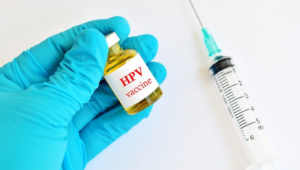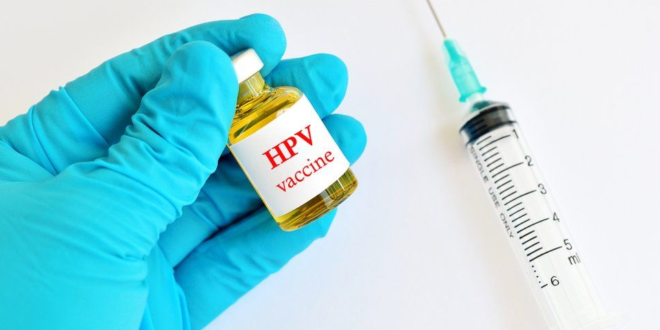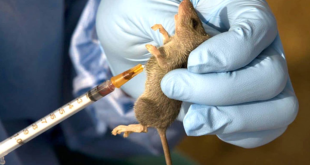What is HPV?
Human papillomavirus (HPV) is a double stranded DNA virus. It usually infects squamous epithelia including the skin and mucous membranes of the upper respiratory, anal, and genital tracts. Human Papillomavirus (HPV) is a common sexually transmitted infection (STI) easily passed on via skin-to-skin genital contact. Good enough, in most people, HPV infection occurs without showing any symptoms or complications, and majority of HPV infections are cleared by the body’s own immune system within two years. This is much similar to the way our immune system clears a common cold. In some people however, the viral infection persists and can give rise to mild or serious problems.

Risks of HPV Infection
About 40 different subtypes of HPV or more (including over 150 strains) are known to infect the human genitalia. They are categorized into two major groups: low-risk and high-risk. Risk in this context refers to the chances of the virus to predispose someone to experience pre-cancerous changes at the infected tissues.
a. Low-risk HPV Subtypes (Commonly 6 and 11)
This group most often infects the penis, scrotum, vulva and the anal area. If these subtypes cause symptoms, they are typically in the form of genital warts or “papillomas,” which are generally non-cancerous tumors. The warts here are fleshy, painless growths which may be small or large, single or multiple. Warts are not dangerous but they have the potential to cause discomfort and make an ugly sight.
b. High-risk HPV subtypes (Commonly 16 and 18)
This group usually infects the cervix and sometimes the anal area. They may be cleared by the body’s immune system, if not they can cause pre-cancerous changes of these infected tissues. Often times, the infected person shows no symptoms at all. Because of this, regular check-ups are important. If the infection continues without detection, changes within the cells can cause cancer. About 90% of cervical cancers are caused by HPV, as well are most cancers of the vagina, penis, vulva, anus, and oropharynx (which includes the back of the throat, base of the tongue, and tonsils).
Detection and Diagnosis of HPV
It is highly possible that most sexually-active people will likely experience an infection with at least one strain of HPV at some point with no resultant problems or complications. Because of this, routine HPV screening is not strongly recommended. However, it is pertinent to watch for the rare problems that can result from HPV infection, such as:- warts and other cell changes. In females, routine gynecological check ups with Pap smears is necessary at least every three years. This is the best way to detect changes to the cervix that may result from persistent HPV infection. Importantly, regular Pap tests are very effective in preventing cervical cancer, because they detect changes early on before the disease begins to progress. For males, it unfortunate that there exist no routinely-recommended screening test for HPV infection. Current studies however, have continued to evaluate the efficacy of Pap tests of the anal area to look for high-risk HPV in those who engage in receptive anal intercourse. Clinician can also look out for the presence of genital warts in males. It is important to remember that most people infected with HPV will show no symptoms and no abnormalities may be seen on the Pap tests. Majority of those who do not show any symptoms or an abnormal test will have their infection resolve on their own with time.
Treatment of HPV Infection
Genital warts can be treated by a variety of methods, including the use of special medications, the application of a prescription cream, or freezing. It is advisable to discuss with your doctor before the commencement of any treatment. In cases where cervical changes from HPV is observed, more frequent monitoring with Pap tests and colposcopy is recommended. Colposcopy is simply a way to more thoroughly evaluate the cervix by looking at it through a magnifier and taking small tissue samples for closer and more detailed analysis.
Prevention of HPV Infection
The key to HPV infection is through the practice of safer sex. However, the fact that HPV is transmitted through skin-to-skin contact of the genitals and not only through penetration, makes prevention more challenging. The use of condom can significantly decrease the chances of infection of the cervix or anus, but it does not fully protect other genital areas such as the labia, scrotum, perineum, etc. which may also experience skin-to-skin contact. Acquiring additional types of HPV can however be reduced by the use of condom.
HPV Vaccination
The U.S. Centers for Disease Control and Prevention (CDC) has approved the use of a vaccine known as Gardasil-9 as effective and safe in protection against HPV infection. The Gardasil-9 vaccine protects against nine varying strains of HPV, including the strains that are most likely to cause cancer and genital warts.
Who should be vaccinated?
Generally, the HPV vaccine is known to offer protection against cervical, vaginal, and vulvar cancers. However, the vaccine also gives protection against oral and anal cancers, as well as genital warts. Because of this, everyone can benefit from its protection, regardless of their biological sex/gender identity or the sex/gender identity of their partners. HPV does not discriminate, and vaccination is a safe and effective way to protect yourself, as well as your current, and future partners.
 Healthveli
Healthveli




